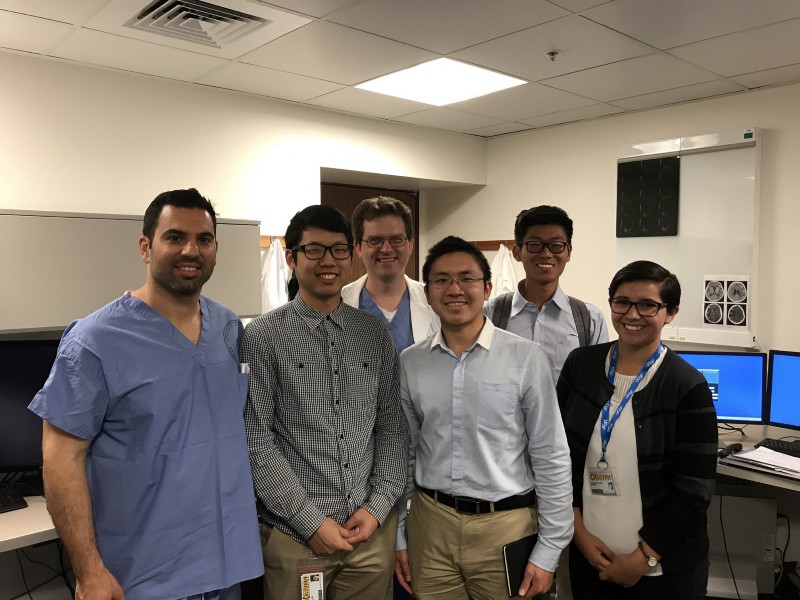UCSF Neuro Interventional Radiology: Making Minimally Invasive Surgeries a Reality
 The following is a guest post from Keith Kim, a UC Berkeley Bioengineering student who participated in the Summer Biodesign Immersion Experience.
The following is a guest post from Keith Kim, a UC Berkeley Bioengineering student who participated in the Summer Biodesign Immersion Experience.
The Neurointerventional Radiology (NeuroIR) group is a subspecial group of the UCSF Department of Radiology in which specialized physicians diagnose and treat strokes, brain tumors, cerebral aneurysms, and other conditions involving the central nervous system with endovascular surgery. The BIE Cohort had the opportunity to go and observe some medical procedures done at the NeuroIR in real-time.
The first team of four had the privilege of watching a cerebral aneurysm procedure. We watched as the surgeons made a small incision near the top of the thigh to access the femoral artery. The catheter was inserted through the femoral artery and pushed up to the point of interest. The surgeons and observers were able to see the entire pathway of the catheter as it went up the blood vessel. After a few minutes, we were able to see the aneurysm through the screen. With the aneurysm now detected, a platinum wire coil was inserted through the catheter. This platinum coil was wrapped inside of the aneurysm to make sure that the blood flowing inside of the bulge would clot. An inflated balloon ensured that the coil would stay inside of the aneurysm while the blood clotting occurred. Afterwards, the balloon was deflated and taken out. Through this method, the aneurysm was treated and normal blood flow through the vessel was restored.
The second team watched two different X-ray angiographies. One of the angiographies was conducted to confirm treatment efficacy for a patient with arteriovenous malformation. The other angiography was used as a follow-up for a patient that had undergone aneurysm endovascular coiling procedures.
The third team observed one X-ray angiography. The angiography was conducted as a five-year checkup for a patient who had received radiation therapy for an aneurysm in the past.
After watching these procedures, we all had the opportunity to ask questions to Dr. Steven Hetts, chief of Interventional Neuroradiology at the UCSF Mission Bay Hospitals. Through this experience, we were able to further understand the intricacies and details behind the medical procedures.
